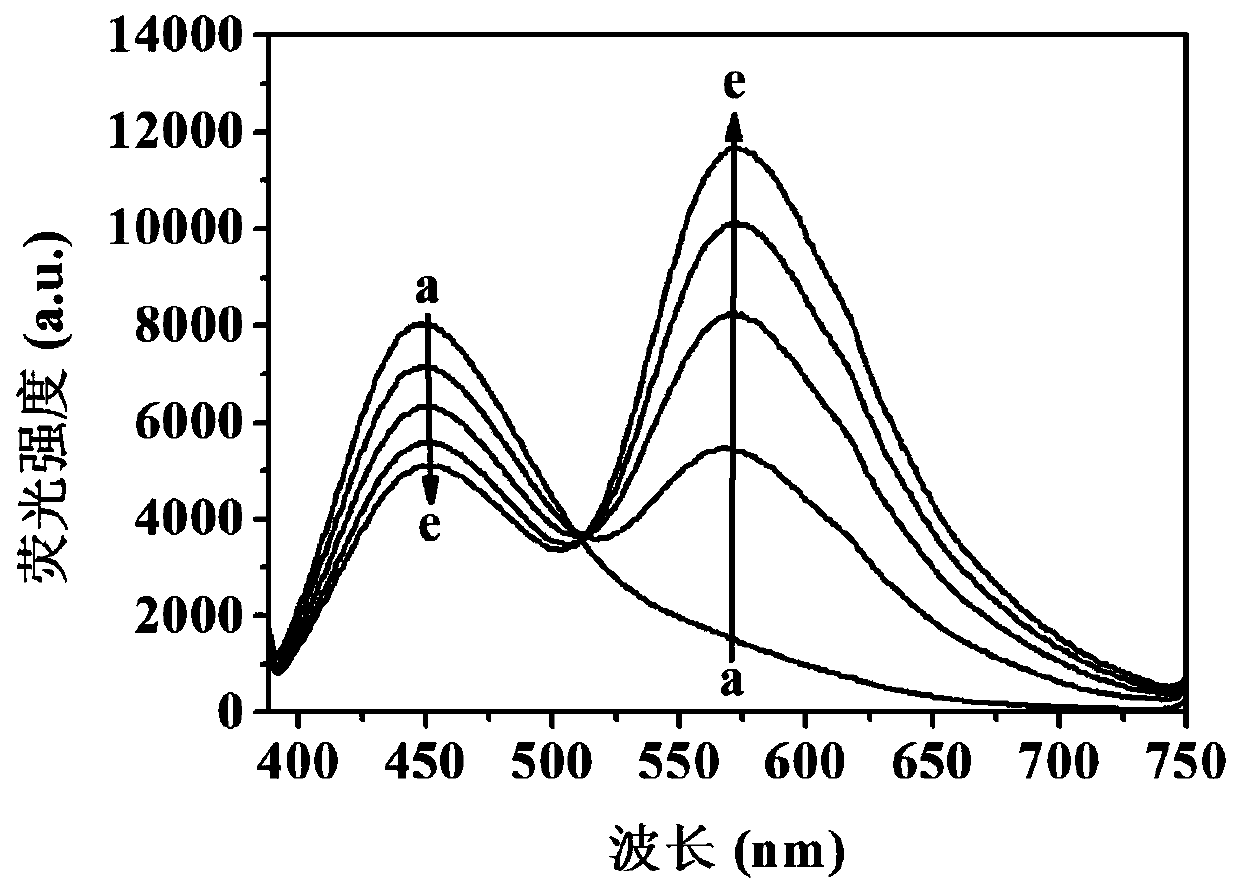Method for detecting concentration of acetylcholin esterase
A technology of acetylcholinesterase and acetylcholine, which is applied in the field of acetylcholinesterase detection, can solve the problems of complex operation methods, low sensitivity, and long reaction time, and achieve high sensitivity, low detection limit, and simple and convenient detection process
- Summary
- Abstract
- Description
- Claims
- Application Information
AI Technical Summary
Problems solved by technology
Method used
Image
Examples
Embodiment 1
[0019] Preparation of carbon quantum dots: Take 1g of charcoal and 200mL of HNO with a concentration of 5mmoL 3 Solution, after mixing, reflux with magnetic stirring in an oil bath at 120°C for 8 hours, filter the refluxed reaction solution to obtain a supernatant; use NaOH solution to adjust the pH value of the supernatant to neutral, and use 0.22 μm Filter through a microporous membrane, take the filtrate, and freeze-dry to obtain the obtained product.
Embodiment 2
[0021] A method for detecting the concentration of acetylcholinesterase, comprising:
[0022] Step 1. Dissolve 2g of trypsin in 10ml of ultrapure water. After dispersion, put it into a 20ml reaction kettle, react at 180°C for 10h, take it out, and freeze-dry it to obtain carbon quantum dots. The pH used for the carbon quantum dots is 7.4 and the concentration is 0.05mol / L Tris-HCl buffer solution prepared as a concentration of 5.3 × 10 -6 g / mL carbon quantum dot solution;
[0023] Step 2, first use acetylcholinesterase dry powder and ultrapure water configuration concentration to be the stoste of 1000U / L, described stoste is carried out gradient dilution with described Tris-HCl buffer solution, make the acetylcholinesterase standard solution of different concentrations, its Concentrations are 0U / L, 2U / L, 5U / L, 10U / L, 25U / L in turn, and then add 100μl to 100μl of the acetylcholinesterase standard solution with different concentrations as described above to obtain a concentrati...
PUM
 Login to View More
Login to View More Abstract
Description
Claims
Application Information
 Login to View More
Login to View More - R&D
- Intellectual Property
- Life Sciences
- Materials
- Tech Scout
- Unparalleled Data Quality
- Higher Quality Content
- 60% Fewer Hallucinations
Browse by: Latest US Patents, China's latest patents, Technical Efficacy Thesaurus, Application Domain, Technology Topic, Popular Technical Reports.
© 2025 PatSnap. All rights reserved.Legal|Privacy policy|Modern Slavery Act Transparency Statement|Sitemap|About US| Contact US: help@patsnap.com



